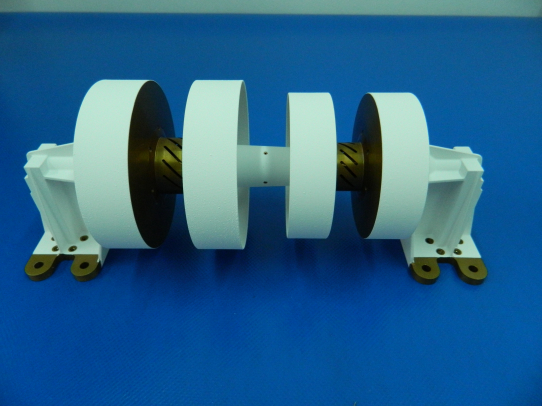-
StatusCompleted
-
Status date2015-10-28
The goal of the activity is to qualify a TCR antenna that provides an elliptical pattern, with a different beam width in azimuth and elevation planes. The unit needs to meet some specific requirements in terms of frequency separation, gain and axial ratio. The proposed unit includes both antennas (Telemetry and Command) together in a single structure, linked by an intermediate piece.

The main challenge is to achieve the desired performances in gain levels, axial ratio and return loss. The resonant cavity impedance is difficult to predict by design, which creates uncertainties in the antenna return loss. In addition, the axial ratio performance needs to be explored, as the resonant cavity characteristics limit antenna operating bandwidth.
The development of this unit allows RYMSA Espacio to be in a competitive market position versus the current TCR antenna suppliers in the US market.
The unit incorporates Transmit and Command capabilities in a compact way. The mechanical and the RF interfaces are installed in a single flange, minimising the number of interfaces. All antenna pieces are made in aluminium in order to minimise thermal effects and to improve the cost. The antenna can easily be modified to operate at other frequencies across the Ku-Band due to the simplicity of its design.
SYSTEM ARCHITECTURE
This antenna is part of the TC&R system.
The activity includes a design phase with a PDR and a CDR, followed by the EQM production phase. A TRR is also foreseen after manufacturing phase, and the activity will be closed after testing with a Final meeting.
The antenna has been fully manufactured in aluminium using standard processes, using as an external coating a recently acquired white paint. It has been managed to install the RF interfaces coplanar with the mechanical attachments, minimising the mass and the volume. A full test campaign, including vibration, shock and thermal cycling has been performed. The antenna radiation patterns have been identified through an initial and a final test campaign at RYMSA Espacio facilities.
The antenna limitations in terms of performances have also been identified, and the activity results may be used as starting point for future designs.


